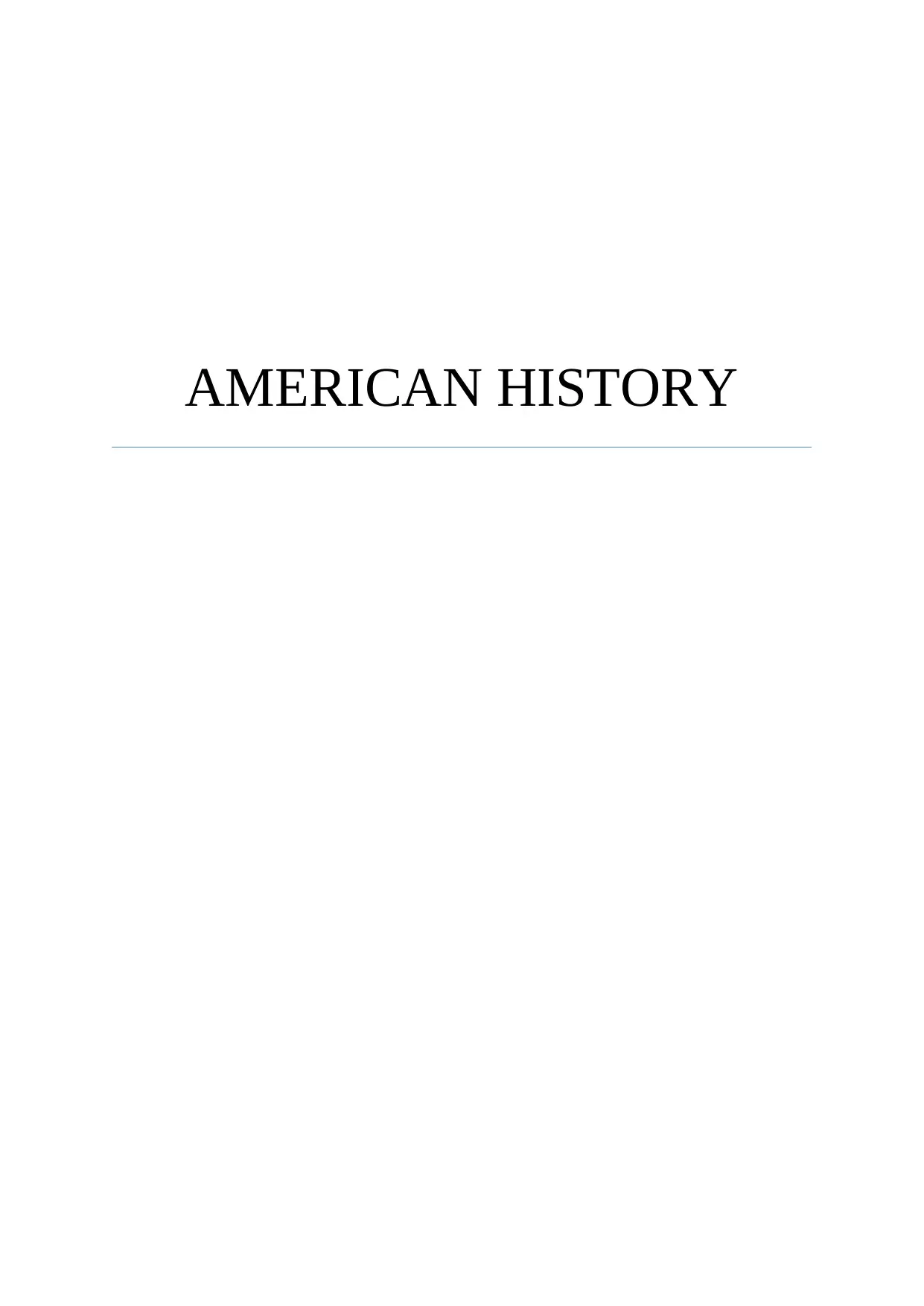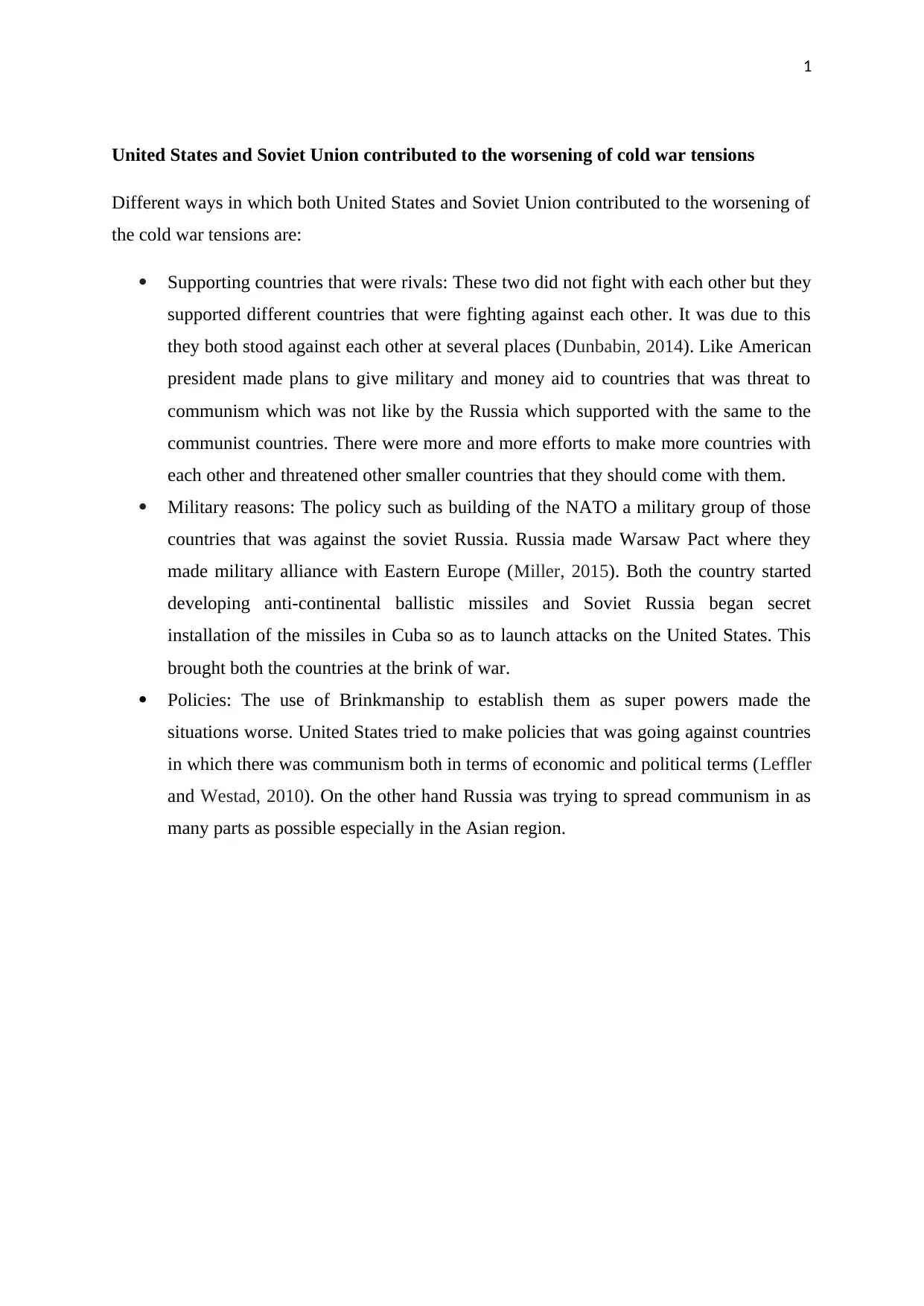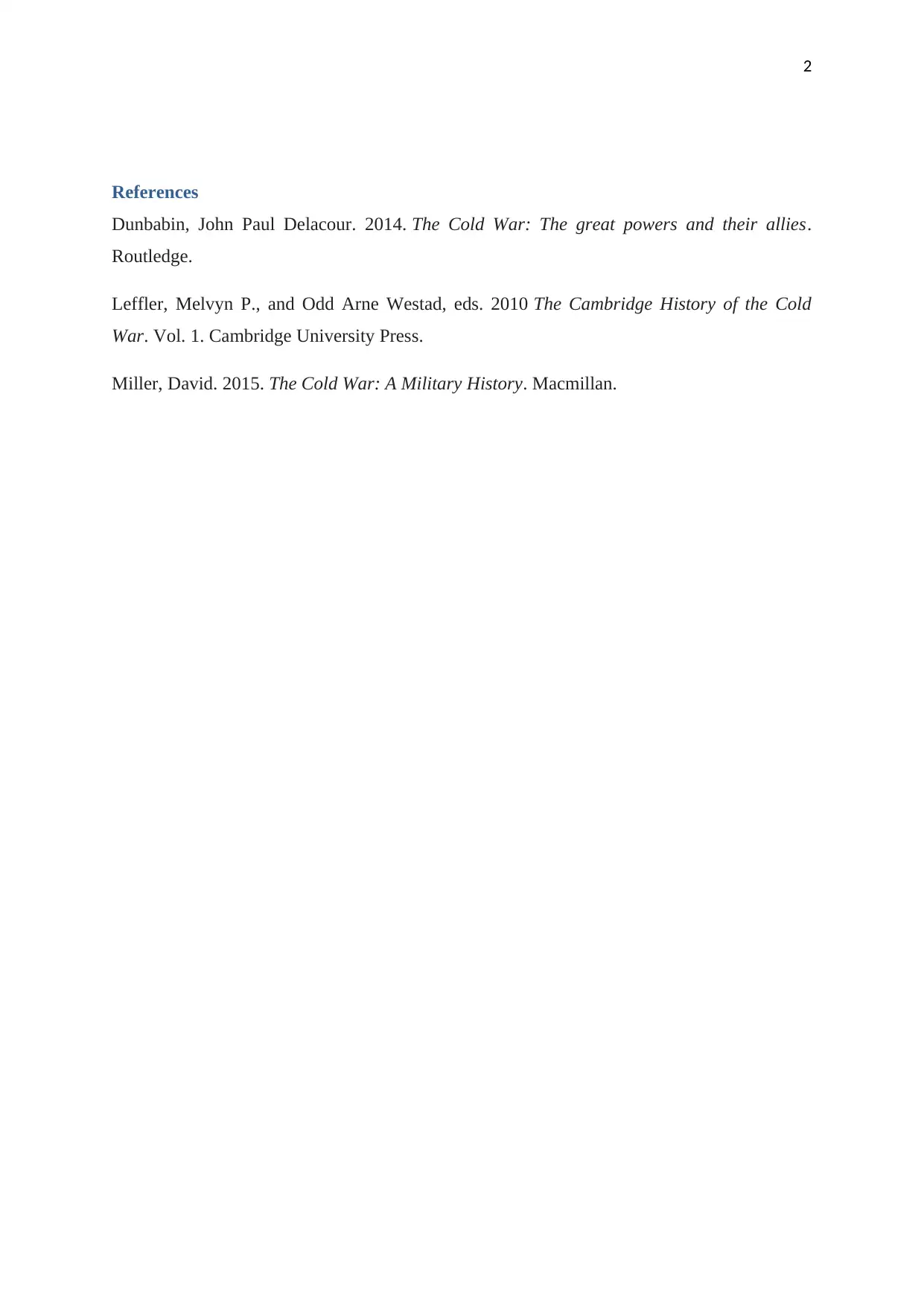Cold War: US and Soviet Union - Worsening of Tensions Analysis
VerifiedAdded on 2022/09/05
|3
|363
|17
Homework Assignment
AI Summary
This assignment provides an analysis of the Cold War tensions between the United States and the Soviet Union. It highlights how both nations contributed to the worsening of these tensions through various means. The assignment explains that the US and Soviet Union supported rival countries, leading to proxy conflicts. It also discusses the military aspect, including the formation of military alliances like NATO and the Warsaw Pact, and the development of ballistic missiles. Furthermore, the assignment explores the political strategies, such as brinkmanship, and the ideological conflict, where the US opposed communism and the Soviet Union aimed to spread it. The assignment references key sources such as Dunbabin (2014), Leffler and Westad (2010), and Miller (2015) to support its arguments. The overall aim is to offer an understanding of the key factors that escalated the Cold War.
1 out of 3










![[object Object]](/_next/static/media/star-bottom.7253800d.svg)